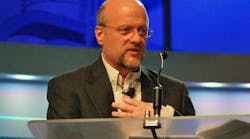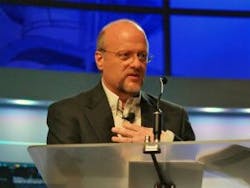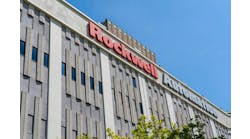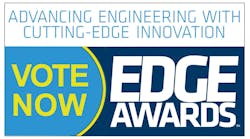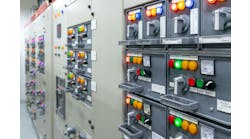“It’s the best example of Honeywell’s commitment to continuous evolution that I’ve ever seen.” ExxonMobil’s David Patin discussed how Honeywell had successfully paved the way for the company to preserve and bring forward its legacy TDC investments.
The state of ExxonMobil’s distributed control system (DCS) fleet is not unlike that of the process industries overall. The oil & gas supermajor still has in operation a significant number of older systems installed as far back as the 1980s—systems that have served the company well for more than 30 years, but as older electronic components have been replaced by more modern alternatives, spare-parts shortages and looming obsolescence put ExxonMobil and other owner operators in a difficult place.
When facing obsolescence, rip-and-replace is clearly the option of last resort—incurring high costs, protracted downtime and the loss of all the intellectual property invested in developing a system’s displays, databases, control strategies and third-party interfaces, according to David Patin, distinguished engineering associate – control systems, ExxonMobil Research & Engineering.
The company’s installed base of Honeywell TDC 3000 systems, in particular, looked to be facing a critical shortage of spare parts in the year 2025, Patin explained. “So in 2011 we met with Honeywell regarding the future of TDC 3000,” Patin began, addressing a plenary session of the Honeywell Users Group Americas 2018 conference this week in San Antonio.
Challenge issued
Unwilling to settle for rip-and-replace, “We challenged Honeywell to develop and prove a method to migrate TDC forward,” Patin said. The two companies established a joint task team to investigate the problem.
ExxonMobil’s wish list of deliverables included avoiding wholesale system replacement (especially the I/O); preserving the company’s intellectual property investment; allowing for on-process migration of system components (meaning without shutting down the process); enabling new capabilities not currently possible with TDC; and unifying TDC with Honeywell’s current state-of-the-art Experion platform.
This last item encapsulated a desire for a solution that would “be usable by a younger workforce, yet stand the test of time,” Patin said. “I picture a third-grader who’s also a future TDC engineer,” he said. “They just don’t know it yet.”
Also implicit in ExxonMobil’s requirements were continued “rock solid” reliability and security, Patin added.
Solution identified
Since the technical obstacles to bringing TDC forward hinged on hardware obsolescence, notably controller microprocessors and communications chips that would no longer be available, the team settled on an emulation approach that would effectively abstract TDC system functionality from the specifics of the older hardware.
And in February 2018, seven years after that first meeting of the minds—and two years ahead of schedule—Honeywell answered ExxonMobil’s challenge with the release of Experion LCN R501.1. The Experion LCN, or ELCN, effectively emulates the TDC system as software. “It’s 100% binary compatible and interoperable with the old system,” Patin explained. “Current TDC code runs unmodified in this virtual environment, greatly reducing the technical risks. Intellectual property such as application code, databases and displays are preserved.”
In the end, the Experion Station, Server, ACE and APP nodes can take the shape of Windows-based “physical” applications or virtual machines. Application Modules, Network Gateway and Network Interface Module functionality is redeployed on Universal Embedded Appliances or as virtual appliances. Only the Enhanced PLC Gateway cannot be readily virtualized because the emulation of serial network connectivity is not well behaved, Patin explained. “This means you can build an almost 100% virtualized or 100% physical system—or somewhere in between.”
With the new solution, LCN and UCN messages are now encapsulated in standard Internet Protocol. “All the old networks now exist as logical constructs on Fault Tolerant Ethernet,” Patin said. “We’re no longer locked into proprietary networks.”
And to address the challenge of on-process migration, Honeywell has also introduced several bridge devices that effectively facilitate the virtualization of TDC system node functionality—without the need to interrupt the process under control.
Benefits achieved
Virtualization of the TDC environment has come with some added benefits, including the ability to use Honeywell’s cloud-based Open Virtual Engineering Platform to engineer TDC solutions; lower cost, smaller footprint training simulators; peer-to-peer integration of virtualized HPM controller nodes with current-generation C300/ACE nodes; support for OneWireless (ISA 100 and WirelessHART) connectivity; and integration with ControlEdge and Unit Operations Controllers.
“It’ll be a game-changer,” said Patin. “We don’t know all that’s possible as yet.”
Other benefits include a drastic reduction—or elimination—of spare parts, as well as reductions in cabinet space requirements. “We’ve gone from two nodes to six in a single cabinet,” Patin said. “We’ve not fully realized unification with Experion, but that process has begun.”
Overall, Patin gave high marks to the Honeywell team for its response to ExxonMobil’s needs. “The challenge was met, and expectations exceeded,” he said. “The need to replace an entire system is eliminated, future component issues are virtually eliminated (pun intended), intellectual property is preserved and on process migration is supported.
“ELCN technology essentially resets the odometer on your TDC 3000 investment,” Patin added. “It’s the best example of Honeywell’s commitment to continuous evolution that I’ve ever seen. And if it were a final exam, I’d give Honeywell an A on this one.”
